By Sam Glaser
I’d like to thank my friend and mentor Rabbi Simcha Weinberg for the inspiration for this newsletter.
My favorite comic of the season is Bart Simpson at the blackboard scrawling, “I won’t count how many pages are left in the Machzor.” Formal prayer is an acquired taste, and its acquisition is best achieved with frequent prayer. This theological Catch 22 is exacerbated by the fact that many of my fellow Jews only show up to pray on the two days a year when the prayers are by far the most long winded, confusing and complicated. I have a theory that the intensity and importance of the High Holiday liturgy requires that the chazzan keep the congregation engaged in participatory melody, and the rabbi uses his teaching moments primarily to answer the elephant in the room question: “Why are we here?”
Thankfully I came armed this year with several powerful divrei Torah on this very subject to share with my sweet congregation in Virginia Beach, VA. During Elul, the last month in our Jewish calendar year, I dive into the Machzor (holiday prayer book) out of necessity. As cantor I feel that it is important to run the High Holiday services several times in their entirety so that I am fluid on the melodies and liturgy and can focus on deeper meanings. In order to give words of illumination when I give a sermon, I spend the month steeped in holy books, holy websites and sitting eagerly in the front row when various Torah luminaries grace my shtetl in Los Angeles teaching holiday preparation workshops.
The net effect of this preparation is much like the difference between rushing through an art museum versus taking a comprehensive tour with a knowledgeable docent. It’s great to just show up and see some paintings, but the effect of deep preparation and a powerful guide creates a completely different experience. I realize that if I weren’t leading the holidays in a professional capacity I would not put in the time. But because I do make an effort, I can see how making that effort in other areas of my life would make a profound difference.
I’d like to offer a five part answer to the “Why are we here” question that I hope will enhance the experience of my dear readers come this Yom Kippur. The key “take home” concepts are first impressions, aspiration, desire, beauty and royalty.
First impressions: Rosh Hashanah and Yom Kippur are truly portals to newness. We are told that “we never get a second chance to make a first impression,” but the miracle of this holiday period is that God gives us that very gift. We are judged “where we are at,” with a completely new chance to be the people we want to be. We learn from Hagar and Ishmael’s expulsion from Avraham and Sarah’s home, in the Torah portion read on the first day of Rosh Hashanah, that God judges Ishmael not for the mischief he caused with Isaac, nor for the trouble he would create for the Jewish People in future generations. Ishmael was judged where he was at the moment when he was fighting for his life, dying of thirst in the harsh desert, and God answered his prayer with a miraculous rescue. This powerful opportunity to become new again isn’t just semantics. Our cells are continuously regenerating. We know we are vastly different from the people we were ten years earlier. We know that change is possible because we HAVE changed as a result of our deepest experiences, both triumphant and traumatic.
When my wife and I were contemplating the wedding of our dreams we realized that the most profound weddings that we had attended were those few Orthodox nuptials that we had witnessed. We started learning with a favorite rabbi about the deeper meanings of all the customs and decided that while a full blown Tish, Bedeken, Kabbalat Panim and Yichud might bewilder our guests, the spiritual rewards of these traditions were worth the effort. The way it works is that the guys go to a tish where they drink, toast, sing and take care of the formal documents. The ladies greet the bride, a queen for the day seated elegantly at the Kabbalat Panim, and receive her exalted blessings. Then the guys rowdily march the groom out to see his bride, as if for the first time ever, and revel in her majesty. My rabbi suggested that we not see each other or even speak a full week before our big day. “Not even speak? Isn’t that severe? What about the last minute details? What about entertaining our out-of-town guests?” I asked in exasperation. He said, “When you first see your beloved bride, the one you have chosen out of all others in the world, you don’t want to think, “How could you have said that to me last night?”
We wisely took the rabbi’s advice. We created a most powerful first impression that will remain forever etched in our minds. Our capable photographer caught the crystalline tears as they cascaded from my eyes as I veiled my bride in a totally overwhelmed state. Our task is to conjure such a first-time meeting when we stand in the synagogue. The new you. Totally separate from the person you were before walking in the room. Just like Adam, the first man. Rosh Hashanah is commonly known as the anniversary of the creation of the world. In actuality, it is the birthday of Adam, the anniversary of the sixth day, the one that really mattered. Just like Adam stood alone in a nascent Garden of Eden, the very definition of a fresh start, so too can we on this first day of the year, and every day thereafter.
Adam’s first prayer was one of aspiration. He saw an incomplete world and according to Rashi, felt in his heart, “this could be so much more!” This is the theme that should inform all of our prayers during this High Holiday period. We’re not davening for selfish reasons; we must see a world of potential and want that potential realized. Only when Adam prayed did the rain fall and create the vast greenery of the garden. Let us all be like Adam and truly want greatness from ourselves and from our world. We live in a time of information overload. Constant news updates, constant connection. After enough bad news it’s easy to close our eyes, to ignore the world’s pain. This is the season to reawaken our aspirations, to remove complacency from our hearts, not to accept the status quo. Think big thoughts! God will hear your prayer! We could be so much more.
God gave Adam a few jobs: take care of the garden, name the animals, avoid certain trees. Adam became a Yes-man, calmly awaiting God’s next command. God quickly saw that this was not ideal (lo tov) and realized that the key to inspiring Adam to take initiative, to think outside the box and feel a sense of desire, was to give him the gift of a wife. Eve ignited his passion and cajoled him to reach his potential. We see proof of Adam’s complacency in the fact that God put him in a “deep slumber” much like God did with Abraham and Daniel. Rather than seeing the overarching prophetic visions like the other biblical heroes, Adam saw nothing during his sleep. Adam’s newfound desire with Eve was a good thing: although he ate from the forbidden tree, at least now he could be a partner with God, not just an employee. This time period, therefore, is the season for the rekindling of desire. We sing Zochreynu L’chaim in our prayers acknowledging that God is DESPERATE for us to desire life, to act as his “hands” in the world, to fill our days with purpose and beauty.
Speaking of beauty, a popular Midrash from the book of Exodus tells us that the Jewish women made mirrors of copper to use when beautifying themselves for their husbands. Most couples had given up on reproducing in the face of the crushing slavery. We were redeemed in the merit of these women who made the effort to show their exhausted husbands both of their images in the mirror. The husbands could see the beauty not only of their wives but the wives would remind their husbands that they too were beautiful in their eyes. The women rekindled their appetite and thereby ensured the future of the Jewish people. In light of their “illicit” origins, Moses was reluctant to follow the command to turn these mirrors into the kiyor, the washbasin that the cohanim (priests) would use in the Mishkan. But God insisted that the cohanim would see their reflection and be reminded just how beautiful they were to God. My friends, we are all God’s children. We are so beautiful to God, just like our own children are beautiful to us. We slide home at the end of a tough year of hard knocks and bruises to our ego. We may get dressed up in our nicest clothes and show up in style to the synagogue on the High Holidays, but inside we feel like a mess. This is the season of restoring our inner beauty, knowing that we are a treasure, one of God’s precious children.
We are so beautiful in God’s eyes that in fact that we are supposed to feel like royalty. One of the crucial changes in the liturgy is the repeated emphasis on God as melech, or king. The Rosh Hashanah service opens with the cantor’s bold Hamelech fanfare, we make the melech insertions in the Amidah or risk having to start the whole thing from the beginning, and we cry out with the plaintive Avinu Malkeynu, our Father our King. Does an omnipotent God need our flattery? Well, yes. A king is powerless without subjects. And having a king as your Father in heaven elevates you to the rank of prince or princess. Our sages tell us that we earned our pedigree by being the offspring of our exemplary matriarchs and patriarchs. The Akeyda, the binding of Isaac, which we read the second day of Rosh Hashanah, sealed our regal status in the eyes of all the heavenly realms. If we do our job over the High Holidays, we emerge whitewashed of sin and reunited with our Creator and our meritorious ancestors. We leave in royal robes, deeply perceiving our inner beauty, filled with aspirations to make the world a proper kingdom for God.
It’s not only Rosh Hashanah where we see mention of God’s kingship. An important part of our Yom Kippur service is the re-enactment of the procedures followed by the priests in the Beit Hamikdash (Holy Temple.) The reason is not only to commemorate what was. It is to remember that we had a palace, a national central address fit for our King. When we sing about the rebuilding of Jerusalem we’re not talking about the Ben Yehuda mall. Think of the sound of the shofar as a coronation trumpet; think of the unforgettable melody of the evening High Holiday prayers as the coronation suite. Thanks to the genius of the commentator Ba’al Haturim, we see that the gematria (numerology) of the Beit Hamikdash equals 861. So does the word Rosh Hashanah. There is an integral connection that bonds both concepts, inspiring us to reclaim our regal heritage and turn our hearts towards Jerusalem.
Perhaps the best way to answer the “why are we here” question is to rejoice in the fact that we are judged. Judgment day sounds like a frightening eschatological B-movie. We live in a time of unparalleled political correctness where judging others is frowned upon. What’s good for you is good for you just as long as you don’t hurt anyone. Dress in woolen suits on a hot day and sit in a synagogue to be judged? I’ll take the beach! But the reality is that we crave judgment. We’re desperate to know that we are on a true path. We spend millions on success coaches, consultants and seminars to help us realign our trajectories and reach our goals. Parents that don’t judge kids destroy their kids. Give your child consistent reward and punishment and you show your love. Ignore him or her and you demonstrate disinterest or even hatred. The idea of God judging me gives me comfort that God cares about me. In response to the love of my Father in Heaven, my Avinu Malkeynu, I am swooning with love that I am eager to reciprocate; I joyfully enter Sukkot with care that I don’t do ANYTHING to damage this precious relationship.
Chassidim frown upon saying the Vidui (confession) on Yom Kippur with a sad voice. How mind-blowing is it that we can fix everything? That God forgives us? That makes me want to cheer! A chet (sin) literally means “missing the mark,” in other words, there can be no intentional sin, only being off target because we don’t perceive the gravity of our actions. Those sins that give us impetus to repair our relationship with our Creator become mitzvot! Confession is a Torah mitzvah, and we must serve God with joy! I’m not recommending putting on a clown suit and parading around the bima (pulpit.) But when you pound your chest in pain for all those shortcomings of our humanity, do it with a smile inside, knowing that God cares, judges us with love and is ALWAYS ready for us to come home.
The High Holidays are about restoring what we always have inside, which is a sweet, loving child. Our inner child is quick to recover from a hurt, openly affectionate and sees the world with wide-eyed wonder. That child knows he or she is beautiful, is filled with desire, and since the world revolves around him he can be a tyrant prince. When a toddler sees his dad on his knees with his arms outstretched across the room, he RUNS into his daddy’s arms with joyous abandon. Rabbi Weinberg quoted the Zohar as stating that the shofar blast is really a lullaby. I know that in my last blog post I referred to the Talmudic reference that the sound is supposed to a forlorn wail modeled after a certain nameless biblical character. But for now, just picture that the final tekiya gedolah at the end of Yom Kippur is a gentle lullaby from God, just for you. May the answer to “why are we here” be perfectly clear: all we need to do is simply run into the arms of our loving Father in Heaven, and hold on to that feeling everyday of the year.
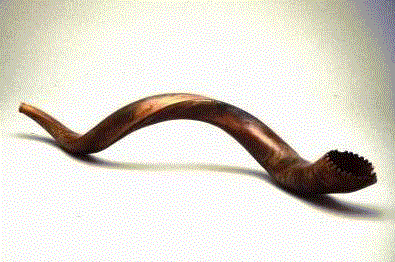 I just returned from my distant cousin Gene Samson’s funeral. I must admit I left my home this morning a bit frustrated that I was going to “lose” half my day and had to wear a black suit on a 90 degree LA scorcher. But as soon as I entered the mortuary I was immediately uplifted by the faces of my extended family and felt the soul-satisfaction of performing the ancient and powerful mitzvah of participating in the burial of a loved one.
I just returned from my distant cousin Gene Samson’s funeral. I must admit I left my home this morning a bit frustrated that I was going to “lose” half my day and had to wear a black suit on a 90 degree LA scorcher. But as soon as I entered the mortuary I was immediately uplifted by the faces of my extended family and felt the soul-satisfaction of performing the ancient and powerful mitzvah of participating in the burial of a loved one.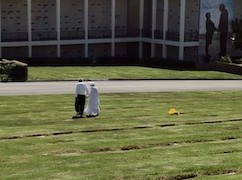 couple married for over 50 years, wearing white, exploring the verdant burial ground of our extended family. I got to cry simply because I love my parents so much, because I miss the relatives that have left us, because I’m human and have a God-given need to open my heart and just have a “good cry.”
couple married for over 50 years, wearing white, exploring the verdant burial ground of our extended family. I got to cry simply because I love my parents so much, because I miss the relatives that have left us, because I’m human and have a God-given need to open my heart and just have a “good cry.”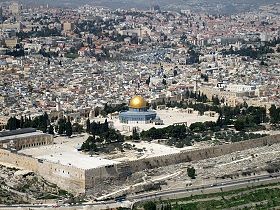 Isaac says “Hineni,” (here I am) and seems to be complicit in his own demise. Avraham is asked to destroy everything he has worked for. The midrash tells us that the angels were crying tears of disbelief and awe at the commitment of our patriarchs and that these tears fell into Isaac’s eyes and led to his blindness. These angelic tears are the tears of injury, tears that are real and damaging and stay with us forever. We have all experienced crises, trauma and tragedy. The question is if we let the damage sabotage us or if we rise from the ashes stronger and more deeply connected to our Creator.
Isaac says “Hineni,” (here I am) and seems to be complicit in his own demise. Avraham is asked to destroy everything he has worked for. The midrash tells us that the angels were crying tears of disbelief and awe at the commitment of our patriarchs and that these tears fell into Isaac’s eyes and led to his blindness. These angelic tears are the tears of injury, tears that are real and damaging and stay with us forever. We have all experienced crises, trauma and tragedy. The question is if we let the damage sabotage us or if we rise from the ashes stronger and more deeply connected to our Creator.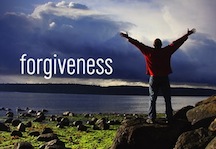 alone. This is the time to make a written accounting of who we are, who we want to be, who we’ve wronged and need to ask for forgiveness. Only when we are at peace with our friends and relatives and in touch with our personal mission can we let the cries of the shofar enter our hearts and tear down the walls of complacency.
alone. This is the time to make a written accounting of who we are, who we want to be, who we’ve wronged and need to ask for forgiveness. Only when we are at peace with our friends and relatives and in touch with our personal mission can we let the cries of the shofar enter our hearts and tear down the walls of complacency.
 trying to hold onto my kids just like I’m trying to hold onto this water.” As I reached into the river for handfuls of water it just escaped through the cracks in my fingers and continued on its inevitable descent. I sobbed tears of sadness and relief as I acknowledged this bittersweet pain that I have been carrying inside.
trying to hold onto my kids just like I’m trying to hold onto this water.” As I reached into the river for handfuls of water it just escaped through the cracks in my fingers and continued on its inevitable descent. I sobbed tears of sadness and relief as I acknowledged this bittersweet pain that I have been carrying inside.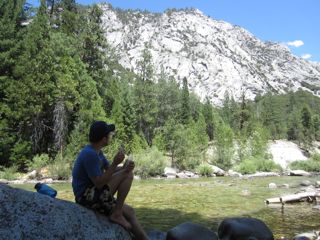 God’s ability to sustain me and keep my family together is crumbling. Rather than serving as an example of holiness and living at peace with the Universe, open to whatever God has in store, I am a frightened child trying to protect all my toys from the neighborhood bully.
God’s ability to sustain me and keep my family together is crumbling. Rather than serving as an example of holiness and living at peace with the Universe, open to whatever God has in store, I am a frightened child trying to protect all my toys from the neighborhood bully.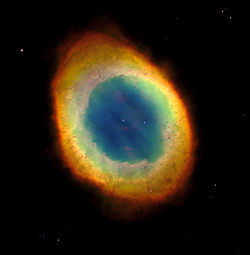 clearing in the forest where we could peer into the pitch-black new moon sky with a sixteen-inch mirror telescope. My friends, I saw a global cluster, the Whirlpool Galaxy and “eye of God” Ring Nebula with my own eyes! All of these celestial bodies have a specific place in the universe, predictable orbits that they follow, so reliable that we can use their light to steer our ships through the night. All of creation is on a path, with atoms in ordered arrays, electrons and protons spinning around nuclei, trees arching towards the sun, ants marching in single file, pelicans drafting off each other’s wingtips. Why should I dread any aspect of my own path, my lifecycle? Thankfully the Jewish People have been given the gift of a long and winding road of 613 mitzvot, in a system called Halacha, the path. Jewish law can be seen as oppressive and burdensome, or as a collection of helpful spiritual signposts to keep us joyful and inspired on the annual orbit of the Jewish year.
clearing in the forest where we could peer into the pitch-black new moon sky with a sixteen-inch mirror telescope. My friends, I saw a global cluster, the Whirlpool Galaxy and “eye of God” Ring Nebula with my own eyes! All of these celestial bodies have a specific place in the universe, predictable orbits that they follow, so reliable that we can use their light to steer our ships through the night. All of creation is on a path, with atoms in ordered arrays, electrons and protons spinning around nuclei, trees arching towards the sun, ants marching in single file, pelicans drafting off each other’s wingtips. Why should I dread any aspect of my own path, my lifecycle? Thankfully the Jewish People have been given the gift of a long and winding road of 613 mitzvot, in a system called Halacha, the path. Jewish law can be seen as oppressive and burdensome, or as a collection of helpful spiritual signposts to keep us joyful and inspired on the annual orbit of the Jewish year. amazing tools to stay on track but I can testify that it is possible to live within halacha and become a robot. I think the key is focusing on filling our lives with kindness to others and gratitude to our Creator. I am grateful for the time God has allotted me to be with my children. I am grateful for vacations and National Parks. I am grateful for stars, rivers and friends. I am grateful for the air that I breathe. I am grateful for my wife, my children, my parents, my extended family. I am grateful to be Jewish. I am grateful for skateboards, skis, guitars and gravity. I am grateful for challenges to overcome. I pray that all of us learn the art of letting go, prying open our hearts to the messages of Heaven and finding our true path. Thanks to a river, a telescope and a new friend, I am a bit closer to finding my own.
amazing tools to stay on track but I can testify that it is possible to live within halacha and become a robot. I think the key is focusing on filling our lives with kindness to others and gratitude to our Creator. I am grateful for the time God has allotted me to be with my children. I am grateful for vacations and National Parks. I am grateful for stars, rivers and friends. I am grateful for the air that I breathe. I am grateful for my wife, my children, my parents, my extended family. I am grateful to be Jewish. I am grateful for skateboards, skis, guitars and gravity. I am grateful for challenges to overcome. I pray that all of us learn the art of letting go, prying open our hearts to the messages of Heaven and finding our true path. Thanks to a river, a telescope and a new friend, I am a bit closer to finding my own. is completely open and there is no one imposing deadlines except you. Being a self-employed musician is even harder. The craft is vastly time consuming, goals are difficult to quantify, and the quality of the final product is entirely subjective and resides in the ether. Most of my peers survive from gig to gig, no grand schemes or business plans. All of my kids are becoming musicians in their own right and while I am gushing with pride at their accomplishments, I am not pushing them into the field as a profession. It’s so easy to flake, to get distracted, to start projects and never finish. If by some miracle you manage to get that masterpiece shrink-wrapped, you then have to put on the businessman’s hat to bring your product to market. Musicians don’t like switching hats; they feel it isn’t part of the job description.
is completely open and there is no one imposing deadlines except you. Being a self-employed musician is even harder. The craft is vastly time consuming, goals are difficult to quantify, and the quality of the final product is entirely subjective and resides in the ether. Most of my peers survive from gig to gig, no grand schemes or business plans. All of my kids are becoming musicians in their own right and while I am gushing with pride at their accomplishments, I am not pushing them into the field as a profession. It’s so easy to flake, to get distracted, to start projects and never finish. If by some miracle you manage to get that masterpiece shrink-wrapped, you then have to put on the businessman’s hat to bring your product to market. Musicians don’t like switching hats; they feel it isn’t part of the job description.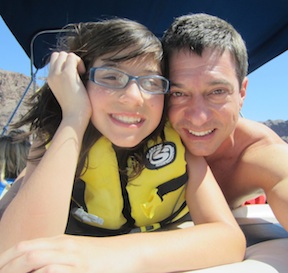 attention save for the furtive glance at his iPhone every few seconds in case a text has arrived. Jesse is a joy to behold unless he’s on headphones mid-battle in his World of Warcraft universe. Sarah plays Mindjolt and Super Mario via Facebook while watching the Food Channel on YouTube. Did I mention we don’t have a TV? We don’t! But everyone has a computer (for homework, of course.) When I get a word in about the importance of self-mastery or using time wisely, I get that look that tells me “you are the ultimate curmudgeon on the planet!” I feel like I’m in a desperate race against the clock to get my kids to appreciate and use their free will wisely while they are still living in my home.
attention save for the furtive glance at his iPhone every few seconds in case a text has arrived. Jesse is a joy to behold unless he’s on headphones mid-battle in his World of Warcraft universe. Sarah plays Mindjolt and Super Mario via Facebook while watching the Food Channel on YouTube. Did I mention we don’t have a TV? We don’t! But everyone has a computer (for homework, of course.) When I get a word in about the importance of self-mastery or using time wisely, I get that look that tells me “you are the ultimate curmudgeon on the planet!” I feel like I’m in a desperate race against the clock to get my kids to appreciate and use their free will wisely while they are still living in my home.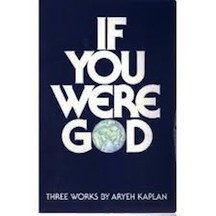 best in his unconventional description of hell in “If You Were God.” According to our sages, we are constantly being measured on how we are maximizing our potential. We are not judged against our peers. Instead, at the end of 120 years, we face the distinction between our potential and actual selves. The degree of difference between them is a source of tremendous humiliation, the “fires of hell,” if you will. Were you the best you that you could be? By maximizing “choose life” moments, we have a better chance of finishing the game in alignment with our greatest potential. According to author Leo Buscaglia, “Who you are is God’s gift to you, who you become is your gift to God.”
best in his unconventional description of hell in “If You Were God.” According to our sages, we are constantly being measured on how we are maximizing our potential. We are not judged against our peers. Instead, at the end of 120 years, we face the distinction between our potential and actual selves. The degree of difference between them is a source of tremendous humiliation, the “fires of hell,” if you will. Were you the best you that you could be? By maximizing “choose life” moments, we have a better chance of finishing the game in alignment with our greatest potential. According to author Leo Buscaglia, “Who you are is God’s gift to you, who you become is your gift to God.” So what are we going to do with the kids this summer? Well, for starters, the ultimate Jewish pride builder: a month at Jewish summer camp. The rest of the time we’ll try to keep them away from screens as much as possible. Yes, we have to intervene…for most kids, time management is bigger than them. We will use the remaining six weeks to nurture existing hobbies and jumpstart new ones. Double up on instrument lessons, lots of Krav Maga, a filmmaking workshop. I am taking my oldest son into the wilderness for a week and will take lots of pictures so that he can look back and see that his old man cared enough to do something about it rather than just complain. And yes, we’ll see some 3D movies, visit the waterslides and go to Ben and Jerry’s. We may be strict but we’re not crazy.
So what are we going to do with the kids this summer? Well, for starters, the ultimate Jewish pride builder: a month at Jewish summer camp. The rest of the time we’ll try to keep them away from screens as much as possible. Yes, we have to intervene…for most kids, time management is bigger than them. We will use the remaining six weeks to nurture existing hobbies and jumpstart new ones. Double up on instrument lessons, lots of Krav Maga, a filmmaking workshop. I am taking my oldest son into the wilderness for a week and will take lots of pictures so that he can look back and see that his old man cared enough to do something about it rather than just complain. And yes, we’ll see some 3D movies, visit the waterslides and go to Ben and Jerry’s. We may be strict but we’re not crazy. My cherished custom every time I land in Florida is to head straight to the beach and jump in the glassy, warm water. The shock of the Pacific chill is absent…no wetsuit required…and the white sand unfolds to the North for hundreds of miles. Upon arriving on this last trip with my fellow Jewish singer and good buddy Todd Herzog, we dropped our bags at the beachfront hotel and davened a peaceful mincha (afternoon prayer) before jumping into the shallow blue-green playground. As we pondered the pelicans and sandpipers, Todd asked me some penetrating questions about why one would want to say the same exact words three times a day. He was curious what I get out of it. Am I was focusing on just getting the words out or am I actually thinking about meanings? Where do I add my own thoughts? And what happens on Shabbat when we stop making requests from God…what am I praying for then?
My cherished custom every time I land in Florida is to head straight to the beach and jump in the glassy, warm water. The shock of the Pacific chill is absent…no wetsuit required…and the white sand unfolds to the North for hundreds of miles. Upon arriving on this last trip with my fellow Jewish singer and good buddy Todd Herzog, we dropped our bags at the beachfront hotel and davened a peaceful mincha (afternoon prayer) before jumping into the shallow blue-green playground. As we pondered the pelicans and sandpipers, Todd asked me some penetrating questions about why one would want to say the same exact words three times a day. He was curious what I get out of it. Am I was focusing on just getting the words out or am I actually thinking about meanings? Where do I add my own thoughts? And what happens on Shabbat when we stop making requests from God…what am I praying for then? central prayer nearly 2500 years ago…and it was clearly already in use when they did so. Among their ranks were several sages of prophetic stature. They boiled down God’s will for the Jewish People in eighteen (later nineteen) crucial categories. When we repeat this menu of our deepest needs, we enact our partnership with God in bringing them to fruition. So central is this prayer to our existence that it is simply referred to as tefila (THE prayer) when discussed in the Talmud. The Sh’ma and psalms are important, but the Amidah is IT. I think Rashi says it best when he explains that l’hitpalel, or to pray, means to dream or think ultimate thoughts. We utter nineteen dreams for humanity and those dreams become part of us, defining our aspirations and clarifying our service to God.
central prayer nearly 2500 years ago…and it was clearly already in use when they did so. Among their ranks were several sages of prophetic stature. They boiled down God’s will for the Jewish People in eighteen (later nineteen) crucial categories. When we repeat this menu of our deepest needs, we enact our partnership with God in bringing them to fruition. So central is this prayer to our existence that it is simply referred to as tefila (THE prayer) when discussed in the Talmud. The Sh’ma and psalms are important, but the Amidah is IT. I think Rashi says it best when he explains that l’hitpalel, or to pray, means to dream or think ultimate thoughts. We utter nineteen dreams for humanity and those dreams become part of us, defining our aspirations and clarifying our service to God.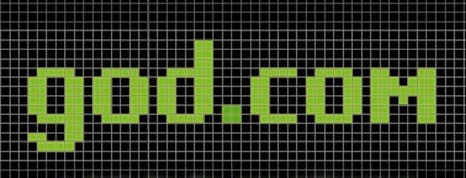 there’s any place that you want to deeply focus and use the formulaic words of the millennia, this is it.
there’s any place that you want to deeply focus and use the formulaic words of the millennia, this is it.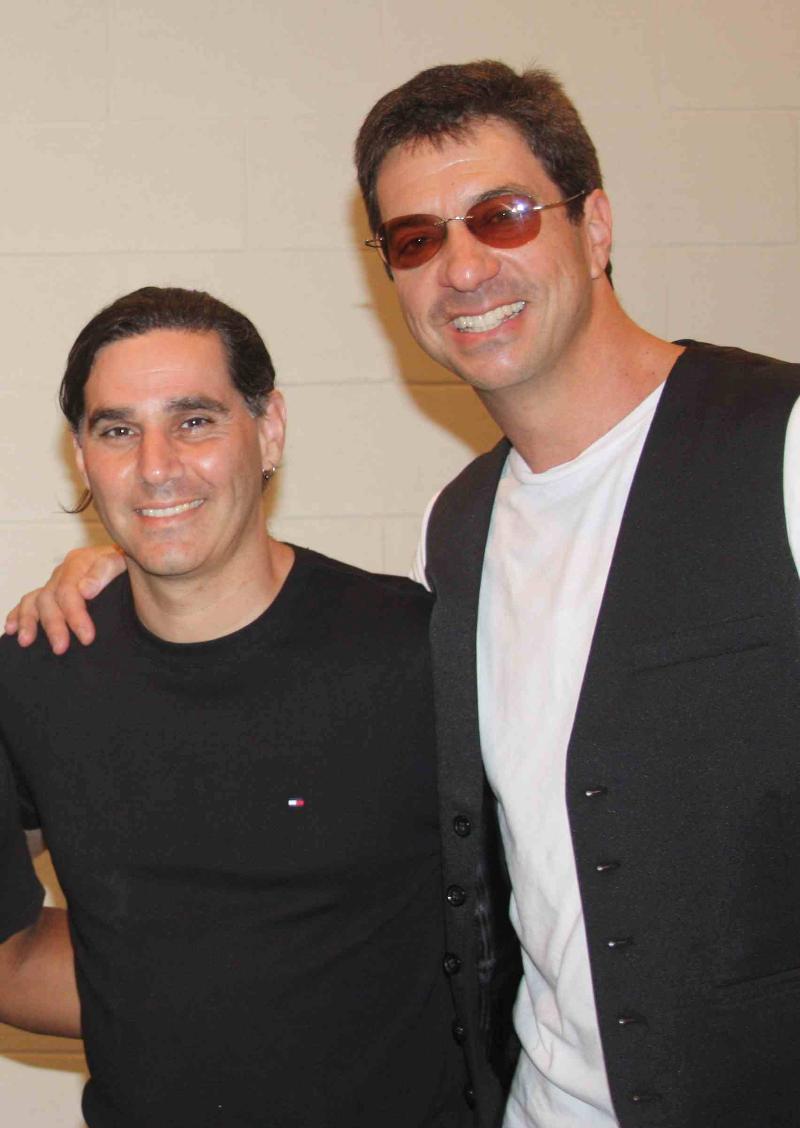
 This Rosh Chodesh Nissan I had the pleasure of culminating my eight-day tour of Florida with a Shabbaton in Cooper City, just north of Miami. Just before launching into Kabbalat Shabbat services I sang Auld Lang Syne. After all, we just concluded Adar, the final month of year in terms of the biblical count. That makes the transition into Nissan the true New Year’s Eve. As soon as the moon is full, on the eve of the fifteenth night of the first month, we celebrate our annual birthday as a nation. Some 3000 years ago we were a nation enslaved by a decadent tyrant, yearning for freedom. At the stroke of midnight that first Passover, after nine months of plagues, we emerged from the womb of Egypt to our destiny of freedom. The concealment of Adar gives way to open revelation at the Sea of Reeds and Sinai, and thanks to our remarkable custom of making an annual Seder, we still relish in the birth of the unbreakable soul of our nation.
This Rosh Chodesh Nissan I had the pleasure of culminating my eight-day tour of Florida with a Shabbaton in Cooper City, just north of Miami. Just before launching into Kabbalat Shabbat services I sang Auld Lang Syne. After all, we just concluded Adar, the final month of year in terms of the biblical count. That makes the transition into Nissan the true New Year’s Eve. As soon as the moon is full, on the eve of the fifteenth night of the first month, we celebrate our annual birthday as a nation. Some 3000 years ago we were a nation enslaved by a decadent tyrant, yearning for freedom. At the stroke of midnight that first Passover, after nine months of plagues, we emerged from the womb of Egypt to our destiny of freedom. The concealment of Adar gives way to open revelation at the Sea of Reeds and Sinai, and thanks to our remarkable custom of making an annual Seder, we still relish in the birth of the unbreakable soul of our nation. insists that this body is no more than a meat-jacket that we must maintain with food, water and exercise so that it can continue to shlep the precious, divine soul on it’s mission. Throughout the year we indulge in petty material concerns and accumulations. Come Pesach, along with our physical spring-cleaning we have the opportunity to get down to the soul level in our worldview and interpersonal connections. Kabbalah has given us a window into the soul that is a perfect user manual that engenders pride in ownership. For those empirical types that must see it to believe it, our tradition teaches a “five levels of the soul paradigm” that clarifies the outlines of the ephemeral self. In the interest of having a wide-eyed, openhearted Pesach, allow me to take you through the journey of these five levels, based on the teachings of Rabbi David Aaron and Rabbi Tom Meyer.
insists that this body is no more than a meat-jacket that we must maintain with food, water and exercise so that it can continue to shlep the precious, divine soul on it’s mission. Throughout the year we indulge in petty material concerns and accumulations. Come Pesach, along with our physical spring-cleaning we have the opportunity to get down to the soul level in our worldview and interpersonal connections. Kabbalah has given us a window into the soul that is a perfect user manual that engenders pride in ownership. For those empirical types that must see it to believe it, our tradition teaches a “five levels of the soul paradigm” that clarifies the outlines of the ephemeral self. In the interest of having a wide-eyed, openhearted Pesach, allow me to take you through the journey of these five levels, based on the teachings of Rabbi David Aaron and Rabbi Tom Meyer. during the Holocaust was meaningless manual labor. Without meaning, our lives become living agony. Also, the nefesh is being expressed when we hear the voice of the conscience speaking, that fundamental, cross-cultural concept of good and evil. We know it’s inherently wrong to punch an elderly stranger in the street. Hollywood movies with heroes and villains sell worldwide because all humans share certain internal ethics. That’s our nefesh speaking. Darwinian evolutionists and physicists can’t quite explain why it’s there. But it is. And we know its voice like we know we have five fingers on our hand.
during the Holocaust was meaningless manual labor. Without meaning, our lives become living agony. Also, the nefesh is being expressed when we hear the voice of the conscience speaking, that fundamental, cross-cultural concept of good and evil. We know it’s inherently wrong to punch an elderly stranger in the street. Hollywood movies with heroes and villains sell worldwide because all humans share certain internal ethics. That’s our nefesh speaking. Darwinian evolutionists and physicists can’t quite explain why it’s there. But it is. And we know its voice like we know we have five fingers on our hand. unique, in spite of the fact that we are one among billions of similarly entitled beings. It’s our neshama speaking when we pursue happiness. I’m sure scientists might have convincing theories about why we strive to feel in sync, on a mission, why we feel we are deserving of happiness. But any true pleasure seeker does not need science to explain this universal drive. When we stop to think about it, it’s clear we have a neshama, a divine force informing our every motivation.
unique, in spite of the fact that we are one among billions of similarly entitled beings. It’s our neshama speaking when we pursue happiness. I’m sure scientists might have convincing theories about why we strive to feel in sync, on a mission, why we feel we are deserving of happiness. But any true pleasure seeker does not need science to explain this universal drive. When we stop to think about it, it’s clear we have a neshama, a divine force informing our every motivation.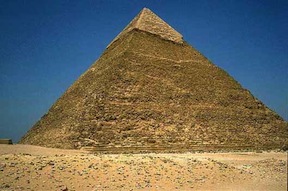 idea of being separate, alone with another. The yichud room at a traditional Jewish wedding is when the bride and groom are secluded in an intimate space just after the ceremony. We’ve all felt yechida: those times when we are deeply connected and empowered and totally blown away. For some of us, it was the birth of our child. For others, a perfect ski run on the back bowls of Vail. Some find it in Yosemite or surfing a glassy, overhead, bowling wave. Ask anyone who feels they were saved from a potential harrowing accident by a miracle. The Seder is a fifteen-step opportunity to spend an entire night in yechida. We say the Sh’ma twice a day to remind ourselves of the possibility, just for that moment, to love God with all our heart, soul and might.
idea of being separate, alone with another. The yichud room at a traditional Jewish wedding is when the bride and groom are secluded in an intimate space just after the ceremony. We’ve all felt yechida: those times when we are deeply connected and empowered and totally blown away. For some of us, it was the birth of our child. For others, a perfect ski run on the back bowls of Vail. Some find it in Yosemite or surfing a glassy, overhead, bowling wave. Ask anyone who feels they were saved from a potential harrowing accident by a miracle. The Seder is a fifteen-step opportunity to spend an entire night in yechida. We say the Sh’ma twice a day to remind ourselves of the possibility, just for that moment, to love God with all our heart, soul and might.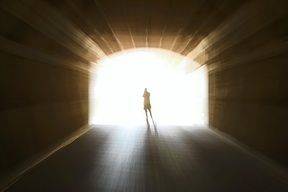 field, Raymond Moody, interviewed thousands of individuals that “flat-lined” for over twenty minutes and then came back to life. Many report a multi-stage chain of events that parallel the description of death in Kabbalah. Commonly experienced phenomena are seeing their body from above, hearing everything that was going on and enduring a rapid review of their lives (much like the great James Brooks movie Defending Your Life.) Some are met by loved ones and are then sent back or feel they must return to their corporeal existence to complete a task. Nearly all see or feel a powerful light that is loving and comforting. Our rabbis tell us that this is the “ziv hashechina,” the light of God, of creation. After all, the sun wasn’t formed until the fourth day…could this be the light that God stated was “good” on the first?
field, Raymond Moody, interviewed thousands of individuals that “flat-lined” for over twenty minutes and then came back to life. Many report a multi-stage chain of events that parallel the description of death in Kabbalah. Commonly experienced phenomena are seeing their body from above, hearing everything that was going on and enduring a rapid review of their lives (much like the great James Brooks movie Defending Your Life.) Some are met by loved ones and are then sent back or feel they must return to their corporeal existence to complete a task. Nearly all see or feel a powerful light that is loving and comforting. Our rabbis tell us that this is the “ziv hashechina,” the light of God, of creation. After all, the sun wasn’t formed until the fourth day…could this be the light that God stated was “good” on the first? Shlomo Carlebach and Debbie Friedman started something big. Much like the Internet freed visionaries to rip away the barriers of industry, these two composers wrote music from their hearts and delivered it directly to the people. They didn’t go to a conservatory to get degrees in composition. Nor did they spend six years at a cantorial school. They heard music in their heads, translated it for the world to access with simple guitar chords and sweet, non-operatic voices, and hit the road to any venue open to their spiritual message.
Shlomo Carlebach and Debbie Friedman started something big. Much like the Internet freed visionaries to rip away the barriers of industry, these two composers wrote music from their hearts and delivered it directly to the people. They didn’t go to a conservatory to get degrees in composition. Nor did they spend six years at a cantorial school. They heard music in their heads, translated it for the world to access with simple guitar chords and sweet, non-operatic voices, and hit the road to any venue open to their spiritual message. unprecedented tranquility, success and freedom. It is the music of a profound and unprecedented byproduct of the 20th century: the optimistic Jew.
unprecedented tranquility, success and freedom. It is the music of a profound and unprecedented byproduct of the 20th century: the optimistic Jew. CD titles on its website; Mostly Music, associated with the Orthodox movement, carries the work of over 1300 different artists. Just last week the annual Song Leader Boot Camp offered three full days of training in the art form to over 90 young singers and composers. The main CJM online outlet,
CD titles on its website; Mostly Music, associated with the Orthodox movement, carries the work of over 1300 different artists. Just last week the annual Song Leader Boot Camp offered three full days of training in the art form to over 90 young singers and composers. The main CJM online outlet,  about 1500 CDs to break even on production costs. That was based on the $15 per album that they could typically charge audiences after a concert, a goal that the average working musician could fathom. With iTunes, the breakeven point jumps to nearly 50,000 singles that must be sold. The new model has emasculated the long form album, the beloved collections that gave singers a dozen songs to make their artistic statements. Spotify, the rising star of subscription services, referred to as the “iTunes killer,” pays the artist .3 cents per listen. I shudder to do the math.
about 1500 CDs to break even on production costs. That was based on the $15 per album that they could typically charge audiences after a concert, a goal that the average working musician could fathom. With iTunes, the breakeven point jumps to nearly 50,000 singles that must be sold. The new model has emasculated the long form album, the beloved collections that gave singers a dozen songs to make their artistic statements. Spotify, the rising star of subscription services, referred to as the “iTunes killer,” pays the artist .3 cents per listen. I shudder to do the math. Haftorah trope with our organist Aryell Cohen, and mastered Mussaf with Cantor Joe Gole who took me under his wing. I had to learn the portions both for my LA ceremony and the one that followed a few weeks later at the holy Western Wall. One night my mom recognized my accomplishments in that short period of time. She came into my bedroom as I negotiated our ancient texts and said, “Sammy, if you keep pursuing your goals like you did this year, there is nothing that will stop you.” Thanks Mom…I’ve been a workaholic ever since.
Haftorah trope with our organist Aryell Cohen, and mastered Mussaf with Cantor Joe Gole who took me under his wing. I had to learn the portions both for my LA ceremony and the one that followed a few weeks later at the holy Western Wall. One night my mom recognized my accomplishments in that short period of time. She came into my bedroom as I negotiated our ancient texts and said, “Sammy, if you keep pursuing your goals like you did this year, there is nothing that will stop you.” Thanks Mom…I’ve been a workaholic ever since.
 Allow me to take you on a tour of adults seated in this sweet portrait, from oldest to youngest. My dad, seated on the couch, is looking somewhat haggard thanks to the 15 grandchildren that invaded his peaceful Pacific Palisades home for the week of Sukkot. He was raised in a WWII-era Bronx family that moved in LA while he was a teenager. He went to LA High, rebelled and joined the army instead of going to college and then took over a division of his dad’s garment company. He went from his Orthodox upbringing to eventually join one of the largest Conservative synagogues in LA, Sinai Temple, the congregation in which I grew up. Nowadays he regularly leins the Torah for his local Chabad and actively engages in the passion of his retirement years: studying and teaching Jewish history.
Allow me to take you on a tour of adults seated in this sweet portrait, from oldest to youngest. My dad, seated on the couch, is looking somewhat haggard thanks to the 15 grandchildren that invaded his peaceful Pacific Palisades home for the week of Sukkot. He was raised in a WWII-era Bronx family that moved in LA while he was a teenager. He went to LA High, rebelled and joined the army instead of going to college and then took over a division of his dad’s garment company. He went from his Orthodox upbringing to eventually join one of the largest Conservative synagogues in LA, Sinai Temple, the congregation in which I grew up. Nowadays he regularly leins the Torah for his local Chabad and actively engages in the passion of his retirement years: studying and teaching Jewish history. I’m sharing this gory detail to point out that in spite of our many differences we find common ground and celebrate our love for one another. Yes, there are frustrating moments like dealing with degrees of kashrut on Pesach and accepted sleeve length. Certain cousins hug the opposite sex, others can’t be touched. We have to negotiate how to attend extended family simchas when they fall on Shabbat but we ALWAYS go. The cousins may come from three countries and dress differently but perceive they are one family. Jennifer told me that her kids went into mourning when their Chassidic cousins returned to Israel. We know that together we are strong and we need desperately each other and we have far more in common than those details that divide us. Sound familiar? This is the story of the Jewish people. We are like five fingers on one hand.
I’m sharing this gory detail to point out that in spite of our many differences we find common ground and celebrate our love for one another. Yes, there are frustrating moments like dealing with degrees of kashrut on Pesach and accepted sleeve length. Certain cousins hug the opposite sex, others can’t be touched. We have to negotiate how to attend extended family simchas when they fall on Shabbat but we ALWAYS go. The cousins may come from three countries and dress differently but perceive they are one family. Jennifer told me that her kids went into mourning when their Chassidic cousins returned to Israel. We know that together we are strong and we need desperately each other and we have far more in common than those details that divide us. Sound familiar? This is the story of the Jewish people. We are like five fingers on one hand. with the punishment of the perpetrators of this desecration. They cannot continue to abuse the system and avoid the consequences of the ripple effect of their insensitivity. One of the basic seven laws of humanity is to set up a system of courts and uphold justice. Israeli police cannot tiptoe around the offenders for fear of Charedi riots. There must be teeth in the punishment of hate crimes for us to hold up our heads up as a Light unto Nations. As the Midrash says, “Whoever is kind to the cruel will end up being cruel to the kind.” Rabbi Yitzchak Schochet of the UK stated, “We must be intolerant in order to defend tolerance, or unkind in order to defend kindness, or hateful in order to defend what we love. Such ‘acts of terror’ have no place in any democratic society, let alone a Jewish State, whose “ways are kind ways, and all her paths are peace.”
with the punishment of the perpetrators of this desecration. They cannot continue to abuse the system and avoid the consequences of the ripple effect of their insensitivity. One of the basic seven laws of humanity is to set up a system of courts and uphold justice. Israeli police cannot tiptoe around the offenders for fear of Charedi riots. There must be teeth in the punishment of hate crimes for us to hold up our heads up as a Light unto Nations. As the Midrash says, “Whoever is kind to the cruel will end up being cruel to the kind.” Rabbi Yitzchak Schochet of the UK stated, “We must be intolerant in order to defend tolerance, or unkind in order to defend kindness, or hateful in order to defend what we love. Such ‘acts of terror’ have no place in any democratic society, let alone a Jewish State, whose “ways are kind ways, and all her paths are peace.”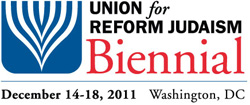 I am writing this newsletter on the road during my 2011 Chanukah tour. It is as varied an itinerary as can be imagined in the Jewish world; a whirlwind of performing for Reform, Conservative and Orthodox synagogues, religious and day schools and a retirement home. This is my eighteenth Chanukah on the road, a time that is often difficult since I am gone for weeks rather than my typical every-other-weekend schedule, but is also the period when I relish in the joy of having so much time to interact with out-of-town friends old and new and reflect on the year gone by.
I am writing this newsletter on the road during my 2011 Chanukah tour. It is as varied an itinerary as can be imagined in the Jewish world; a whirlwind of performing for Reform, Conservative and Orthodox synagogues, religious and day schools and a retirement home. This is my eighteenth Chanukah on the road, a time that is often difficult since I am gone for weeks rather than my typical every-other-weekend schedule, but is also the period when I relish in the joy of having so much time to interact with out-of-town friends old and new and reflect on the year gone by. As Thanksgiving rolls around, I’ve been reflecting on just why it is that turkey and Thanksgiving are both called hodu in Hebrew, and what comes to mind is how much we Jews in America have to be grateful for and how our destinies are intertwined. Thanks to the wisdom of fathers of the constitution, Jews were given a sanctuary in the West where they could flourish in freedom. As a people, we are living proof of the power of free markets, access to education and social mobility. My grandpa came to this country as a penniless teenager from a “one-horse town” in Transylvania. In the very next generation his three sons rose to prominence: a graduate from Harvard Law, a garment industry tycoon and an attorney/opera impresario. As remarkable as our family saga is, we are certainly not alone. This past year on my concert tour I enjoyed an eye-opening view of the depth of this symbiotic relationship between the Land of the Free and the People of the Book.
As Thanksgiving rolls around, I’ve been reflecting on just why it is that turkey and Thanksgiving are both called hodu in Hebrew, and what comes to mind is how much we Jews in America have to be grateful for and how our destinies are intertwined. Thanks to the wisdom of fathers of the constitution, Jews were given a sanctuary in the West where they could flourish in freedom. As a people, we are living proof of the power of free markets, access to education and social mobility. My grandpa came to this country as a penniless teenager from a “one-horse town” in Transylvania. In the very next generation his three sons rose to prominence: a graduate from Harvard Law, a garment industry tycoon and an attorney/opera impresario. As remarkable as our family saga is, we are certainly not alone. This past year on my concert tour I enjoyed an eye-opening view of the depth of this symbiotic relationship between the Land of the Free and the People of the Book. visit Independence Hall and for us kosher consumers, hit the vegan dim sum place downtown. One thing that I didn’t expect was to be embraced by the Jewish angle everywhere we turned. Sure, the Liberty Bell quotes our Torah, “Proclaim liberty throughout all the land…” but the full realization of our contribution was apparent after visiting the two most prominent tourist traps in the center of town. One is the hi-tech Constitution Center where Jewish ideology is credited in guiding the vision of our founding fathers. They were deeply religious men that took their cues from the bible and even considered making Hebrew the national tongue. Some of the tourists, upon seeing my kippah stated: “we love the Jewish people” or “we stand with Israel.” Of course the Jews that stopped us said, “oh, do you know ‘so and so’ from Sherman Oaks?” We saw exhibits that listed prominent Jews in government, building the economy and marching for civil rights. I could see the pride in Sarah’s fifth-grade eyes as she looked for clues of her heritage in this beautifully realized testimony to our grand American democratic experiment.
visit Independence Hall and for us kosher consumers, hit the vegan dim sum place downtown. One thing that I didn’t expect was to be embraced by the Jewish angle everywhere we turned. Sure, the Liberty Bell quotes our Torah, “Proclaim liberty throughout all the land…” but the full realization of our contribution was apparent after visiting the two most prominent tourist traps in the center of town. One is the hi-tech Constitution Center where Jewish ideology is credited in guiding the vision of our founding fathers. They were deeply religious men that took their cues from the bible and even considered making Hebrew the national tongue. Some of the tourists, upon seeing my kippah stated: “we love the Jewish people” or “we stand with Israel.” Of course the Jews that stopped us said, “oh, do you know ‘so and so’ from Sherman Oaks?” We saw exhibits that listed prominent Jews in government, building the economy and marching for civil rights. I could see the pride in Sarah’s fifth-grade eyes as she looked for clues of her heritage in this beautifully realized testimony to our grand American democratic experiment.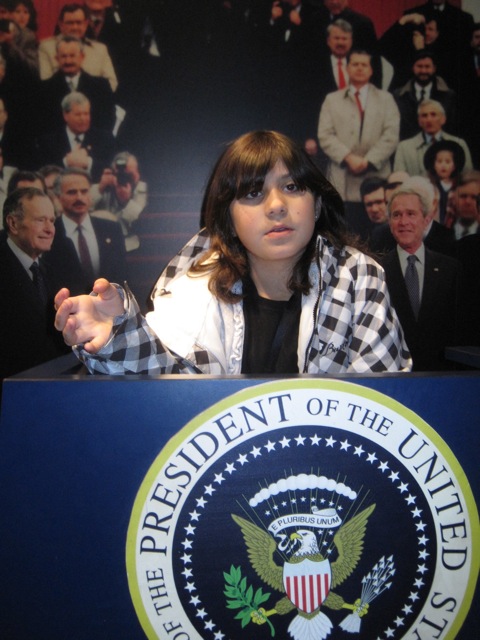 Across the street is the spanking new National Museum of American Jewish History. It’s a stunning 100,000 square foot, five story, state-of-the-art nachas factory for members of the tribe. We began the historical journey on the fourth floor in the mid-1600’s and emerged a few hours later in the present day where we pondered Irving Berlin’s piano, Spielberg’s films and Sandy Koufax’s mitt. I think this multimedia exploration of Jewish accomplishment should be mandatory viewing for all Americans; anti-Semitic bias fades in the light of contributions we’ve made or the degree in which Judaism has informed this country’s values. My Reform friends shared our enthusiasm at the intense degree of Jewish pride furnished by the experience. My Orthodox friends shuddered in horror at the $100 million plus bill that otherwise could have financed Philly Jewish day schools for perpetuity.
Across the street is the spanking new National Museum of American Jewish History. It’s a stunning 100,000 square foot, five story, state-of-the-art nachas factory for members of the tribe. We began the historical journey on the fourth floor in the mid-1600’s and emerged a few hours later in the present day where we pondered Irving Berlin’s piano, Spielberg’s films and Sandy Koufax’s mitt. I think this multimedia exploration of Jewish accomplishment should be mandatory viewing for all Americans; anti-Semitic bias fades in the light of contributions we’ve made or the degree in which Judaism has informed this country’s values. My Reform friends shared our enthusiasm at the intense degree of Jewish pride furnished by the experience. My Orthodox friends shuddered in horror at the $100 million plus bill that otherwise could have financed Philly Jewish day schools for perpetuity.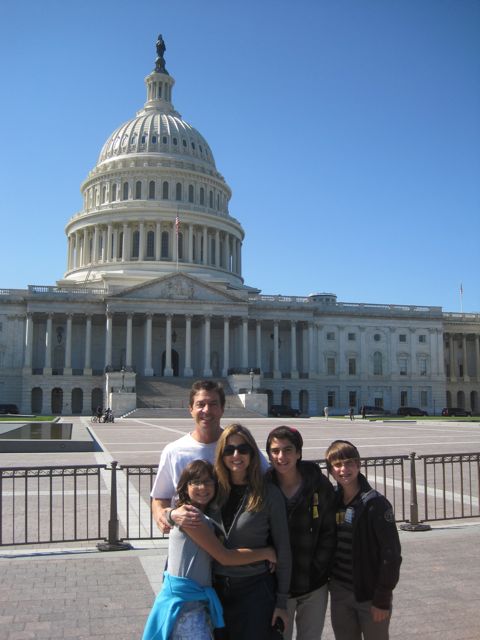 my family on a historic journey to Colonial Williamsburg and then continued north through Richmond up to our friend’s home in Potomac. For kids from LA where “really old stuff” is from the 1960’s, visiting these 1700’s neighborhoods was quite a treat. Well in advance of the trip I worked hard to assemble an overflowing itinerary and booked the various sights with the help of my congressman, Henry Waxman. He was able to secure for us tours of the galleries of Senate and Congress and the Supreme Court, plus a “never tell me the odds” moment: we won the lottery to obtain the rare ticket into the White House where we enjoyed a personal tour from the resident military officers and we met the Obama’s dog, Bo! Following that, my best buddy Chuck’s brother, who is a captain in the Navy, welcomed us for a two-hour insider view of the Pentagon.
my family on a historic journey to Colonial Williamsburg and then continued north through Richmond up to our friend’s home in Potomac. For kids from LA where “really old stuff” is from the 1960’s, visiting these 1700’s neighborhoods was quite a treat. Well in advance of the trip I worked hard to assemble an overflowing itinerary and booked the various sights with the help of my congressman, Henry Waxman. He was able to secure for us tours of the galleries of Senate and Congress and the Supreme Court, plus a “never tell me the odds” moment: we won the lottery to obtain the rare ticket into the White House where we enjoyed a personal tour from the resident military officers and we met the Obama’s dog, Bo! Following that, my best buddy Chuck’s brother, who is a captain in the Navy, welcomed us for a two-hour insider view of the Pentagon.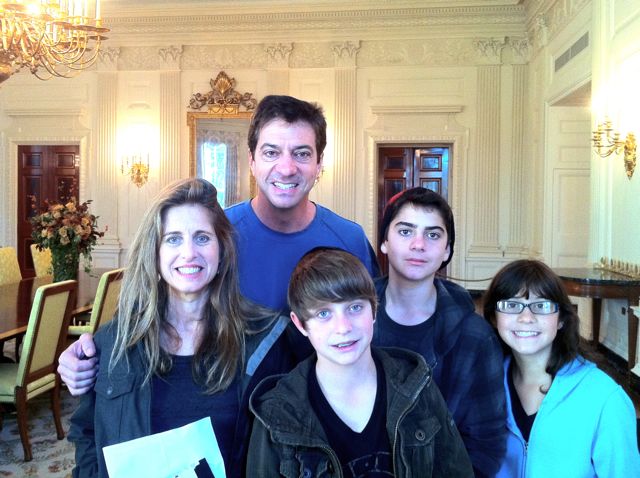 our favorite, the Spy Museum! We went bowling, shopped in trendy Georgetown, visited Chinatown and the historic 6th and I synagogue, hiked to the spectacular Great Falls National Park and somehow did all this in four whirlwind days.
our favorite, the Spy Museum! We went bowling, shopped in trendy Georgetown, visited Chinatown and the historic 6th and I synagogue, hiked to the spectacular Great Falls National Park and somehow did all this in four whirlwind days.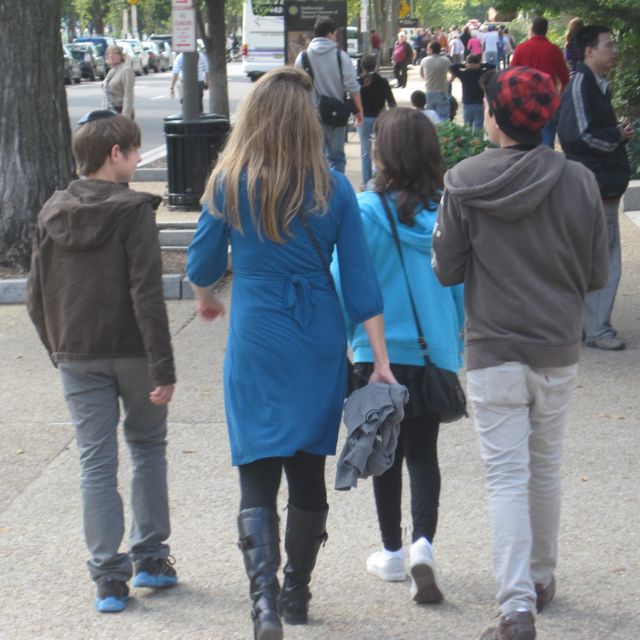 displays describing Jonathan Pollard and Ethel and Julius Rosenberg. A few blocks from the Lincoln Memorial lies perhaps the most important Jewish site of all: Eli’s Restaurant, a glatt kosher eatery where we rested our tired feet and feasted every night before heading back to Potomac on the Metro.
displays describing Jonathan Pollard and Ethel and Julius Rosenberg. A few blocks from the Lincoln Memorial lies perhaps the most important Jewish site of all: Eli’s Restaurant, a glatt kosher eatery where we rested our tired feet and feasted every night before heading back to Potomac on the Metro.